Business Systems: Entry-Level or Enterprise-Level?
So, you’re looking to improve your business systems and discovered there are more commercial property management software options than you thought possible. How does a smart executive choose?
It’s essential to weigh price against capability, workflow and productivity gains. As a result, the most financially efficient system will become obvious. Let’s investigate this in detail.
The common offer
There’s a definite trend towards availability of entry-level software packages for property management. It seems every day another introduction flyer blows into the office announcing the latest and greatest new solution in real estate software. Almost universally, these are the key features:
- Start using right away
- No user fees
- No long-term contracts
- Low monthly fee
If it didn’t mention property management software, one might be inclined to think it was promoting a mobile phone plan. Does commercial property management software actually have the same evaluation criteria as a cell phone plan?
Let’s get going!
Who wants to wait for setup and training? We want to get productivity up right away!
How initial setup affects business systems
The initial setup allows for a significant reduction in workflows due to the automation of tasks that would otherwise be manual. For example, checking invoices against lease document terms can be automated on integrated systems. Similarly, cost allocations can be performed automatically, eliminating the need for time-consuming spreadsheets. Additionally, the reconciliation process can be automated, ending the need for manual reconciliations.
Setup doesn’t have to be difficult or complicated. However, the data needs to be input to allow the system to create the necessary logical structures between the property, lease and financial data sets. These connections allow software automation to take over tedious and time-consuming tasks. Without having the necessary structure in the software, it is impossible to realize significant automation. The system simply doesn’t have enough information to know how to process data for each specific case.
In many cases, large data sets can be set up in the system by using custom import scripts. This is possible when a reliable and accurate data source exists. The scripts map the supplied data into the correct fields in the new database. This setup can save significant time on tedious tasks.
Every advanced skillset requires training and practice. Athletes constantly train and use coaches to teach them and provide feedback. Being good at something requires dedicated education and learning.
Realistic expectations
Facts don’t support the expectation that employee productivity can increase without new systems training. If the system is so simplistic in its capabilities that training isn’t recommended, then there isn’t much hope for increased productivity ever. Alternatively, the system may be sophisticated but without training its users will be continually confused and inefficient in its use.
Training programs teach four important things. Firstly, training programs teach best practices. Secondly, they highlight new and faster workflows. Thirdly, they reveal crucial security procedures. Finally, training programs teach how to use the software most efficiently. This time allows your staff the opportunity to become familiar with the systems and to implement company policies. Providing software training indicates to employees that the company is committed to the system and their use of it.
Providing little or no user training is to accept mediocrity from the outset.
No user fees. Woohoo!
Wait, there are no user roles either?
Business applications need defined user roles. At the very least, the bookkeeping and payment authorization responsibilities need to be separated unless it is a sole proprietorship. Generally, a property management company will need, as a minimum, role segregation in leasing, financial (accounting), asset management (owners) and building maintenance.
Company hierarchy needs to be translated into the software systems and be evident in the user workflows. Approvals should be isolated to those given the authority to make those decisions by the company. The scope of work accessible to a role should be based on the natural flow of information in real life. It’s unlikely your accounts payable person knows that the work done by the maintenance person isn’t recoverable as additional rent for one tenant because of a lease exclusion. If your software isn’t sophisticated enough to do the allocations for you by checking the expense accounts against the lease terms, the lack of capabilities and defined user roles will severely impact the efficiency of your staff. It will drive the workflow outside of the software system.
User roles promote orderly and controllable business operations and decision making. You wouldn’t buy a car with the vehicle controls in the middle for everyone to use at will. Why would you consider critical business systems set up that way?
Defined user roles in business systems are critical for success. They come with scaling fees based on the complexity of the user functions attributed to them. You pay for what you use. We’ll look at fees in more detail below.
No long term contracts?
Ahh yes, the maximum flexibility.
Remember what was said about setup and training? A lack of commitment to a software system doesn’t allow for the realization of any efficiencies either. From the start, effective business systems require setup for automation. Additionally, employees need training to learn effective workflows.
Choosing a property management software system specialized for commercial applications is an important decision. Indeed, it isn’t something you want to do often. It should be a decision that is fully supported by the software supplier. A longer-term contract provides security for your business. Specifically, it assures that your initial investments will have time to pay off. Moreover, a longer-term contract indicates that the software company is committed to supporting and enhancing the system for at least the length of your contract. In contrast, a no-commitment contract lacks these assurances.
Business systems with low monthly fees
Surely those are good!
Fixating on the low fees encourages a “price only” evaluation. Frankly, that’s a ridiculous business proposal. If you want to determine value, you need to look at financial efficiency, not just financial cost. What are you getting for your money?
This isn’t the point where you ask for the features sheet.
What you need to see is how the software workflow and abilities improve employee productivity. Are leasehold improvements automatically capitalized to the correct properties? Are the annual depreciation amounts automatically calculated for the accountants? Can an annual additional rent reconciliation be automated without the use of spreadsheets? Is it ready for review in less than two minutes?
We’ve all seen a lease setup done in a demo. Have them show you how the system logic uses that to calculate the additional rent charges and exclusions based on lease periods and negotiated lease terms. Ask for role-specific examples to see the impact on workflows. How is a reconciliation affected by an area audit challenge in a multi-tenant building? Is it an accounting disaster, or merely two minutes of a supervisor’s time before you have new reports for all the tenants and managers? Go way beyond colourful screenshots and best-case scenarios.
The first software demo won’t be able to cover more than the general overview of the system. You will want to have additional demos on specific roles and workflows to assess capabilities and actual outcomes. To that end, you should get a deeper understanding of how you can vitalize your teams on the whole. In like manner, you should be able to visualize better ways to get work done. All in all, you need to see what you can actually accomplish. Don’t settle for anything less than the “that’s exactly right!” feeling.
Realizing efficiency in productivity gains
Can efficiencies be realized in increasing employee output? If you can give your employees additional workload, then the answer is yes. For example, with the right business systems, employees can manage additional properties within the same time frame. Overall, it is reasonable to expect entry-level software to increase employee efficiency by 2-5%. How will you utilize the newfound time and increased efficiency for productivity gains?
The goal isn’t to drive employees harder. Firstly, the goal includes significantly improving the bottom line while reducing tedious work and time required. Secondly, it is to get more accurate and complete accounting. Thirdly, it is to have a happier team. And fourthly, it is to operate a more professional company.
Software systems need to be evaluated based on the impact on actual user roles. Moreover, any found efficiencies need to translate into markedly and measurable increases in productivity. Only then can you make a value assessment linking price to productivity.
Checking the math
Let’s run a quick sample calculation.
In this illustration, we have assumed an average employee salary of $50,000 per year and 50 weeks working, giving a salary amount of $1,000 per week. The results are scalable to whatever pay rate you want to use.
Entry-level software
Entry-level commercial property management software is typically $1 per unit with a minimum of $200 per month. Assuming that this software gives a realized increase in productivity of 5%, we get the following:
| ENTRY-LEVEL SOFTWARE | PER PERSON | PER 4 PEOPLE |
| Annual Cost | $2,400 | $2,400 |
| Monthly Cost | $200 | $200 |
| Weekly | $48 | $48 |
| Time Savings @5% | 2.5 weeks | 10 weeks |
| Savings | $2,500 | $10,000 |
| Savings Less Cost | $100 | $7,600 |
We have assumed that there is no limit on the number of users allowed on the system at any one time and that fixed fees apply regardless of the number of users.
Enterprise-level software
Enterprise-level software can conservatively increase productivity by 15% in realized output gains. We have assumed an average combined cost per user of $2,400.
| ENTERPRISE-LEVEL SOFTWARE | PER PERSON | PER 4 PEOPLE |
| Annual Cost | $2,400 | $9,600 |
| Monthly Cost | $200 | $800 |
| Weekly | $48 | $192 |
| Time Savings @15% | 7.5 weeks | 30 weeks |
| Savings | $7,500 | $30,000 |
| Savings Less Cost | $5,100 | $20,400 |
Comparisons
Enterprise-level software is the clear winner from a business standpoint. Even if you factor in personnel time for the first-year setup into an enterprise-level solution, you still come out ahead when the size of your company dictates you need to move beyond generic accounting software and spreadsheets. The long-term savings are too significant to ignore.
Given these points, it’s not that hard to decide. For example, if you are delivering products, do you want fancy running shoes or a delivery truck? Running shoes are easy, cheap and require little commitment. However, they offer little change in productivity. A truck requires commitment in time, money and operating costs. However, the boost in productivity puts you in another business class entirely.
Investing in a delivery truck serves to break through current limitations. The running shoes can’t come close. Likewise, enterprise-level software supports an optimal workflow and generates maximum productivity. Not surprisingly, marked business growth requires the implementation of correspondingly large business systems.
Decision time!
As can be seen, enterprise-level software systems unquestionably provide the most direct path to commercial success.
The investment in new business systems needs to result in measurable increases in productivity
To that end, here are several key thinking points when evaluating new software systems:
- What are the current roles in my business structure?
- Why are the roles defined in those ways?
- Is the workflow based on the natural flow of information and decision authority, or are they based on the current system process limitations?
- What are people spending their time on?
- Where can we save the most time?
- How much control do we have over the systems we use?
- Does our work match the processes we use, or does the system define how we do our work?
What defines how we do our work?
Imagine the possibilities if:
- Your business systems were smart enough to use logic to make repeatable decisions instead of people repeating decisions.
- Computers did all your math instead of people making and using spreadsheets.
- Your people did work that let them be thinking humans, and machine systems flawlessly performed the tedious and mundane.
- Roles supported your people, their abilities, their authority and natural lines of communication – rather than system limitations.
- Workflows were complete within the software solution.
CRESSblue is designed to require no more interaction for regular tasks than a person would need. So, if a person can describe a complex invoice allocation to another person in 90 seconds, the software can do the same. Or, quicker. As a matter of fact, CRESSblue will also do all the calculations based on internal logic and give you the results, without using employee time. What’s more, you will receive personal support in the initial setup, implementation and training to ensure your success.
We are ready to make a case for the financial efficiency of our commercial property management software system. Moreover, we are happy to demonstrate the clear difference CRESSblue can make for you.
Disclaimer
This article is for informational purposes only and is not intended as professional advice; please consult a competent professional for advice specific to you. This blog is written to stimulate thinking on concepts related to commercial leasing. Please join the discussion with your experiences.

Martin Sommer, CEO, CRESS Inc.
Martin is a founder and the CEO of CRESS Inc., a Canadian SaaS company that automates lease administration and asset management. Martin also manages Karanda Properties Limited industrial portfolio as Director of Operations in all areas of commercial property management, including new development, asset management, capital expenditures, operations, leasing and lease administration of the industrial portfolio. Martin writes about property management workflow and issues. Book Martin to speak at your industry event.

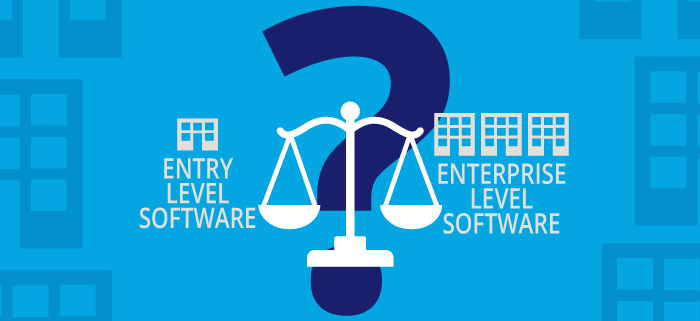
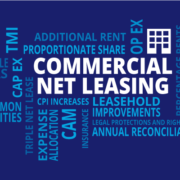
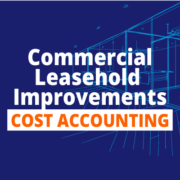

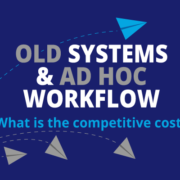


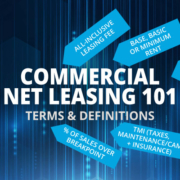

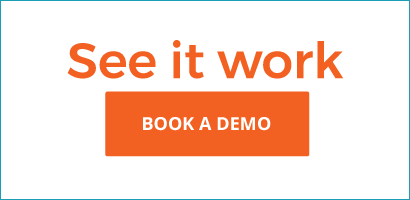
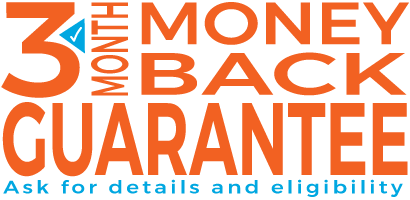


[…] he’s doing the right thing by offering his tenants rent concessions. He didn’t believe using property management software like CRESSblue would be right for him. How could a software that calculates and tracks rent accurately work for […]
[…] and implementing better business systems. You can read more about achieving business systems here and […]
[…] software hardly cost anything, and others charge so much? The difference is in the capability to save or even make money through efficiency and sophistication. The case for business software is financial on one side offset by the significant ROI that […]
[…] and efficient enterprise-level business systems able to automate critical business functions require quite extensive initial setup. Any business system looking to provide software services to smaller landlords must also include a […]